September 14th, 2018 by
As the summer ends and the weather cools, millions of spiders across the country will start to look for somewhere warm and sheltered so that they can mate. This is bad news for arachnophobes, as it means they’ll often end up in our homes! Spiders don’t like to bite people, and they’ll only ever do so when they feel threatened. However, on occasion, it can happen, so it’s best to be prepared! We’ve put together a list of the most dangerous spiders in the UK below. The good news is that there are no spiders in the UK that are venomous enough to kill a human. The bad news is that their bites can still be excruciatingly painful, so if you come across one of these spiders, stay away!
The Walnut Orb-Weaver Spider
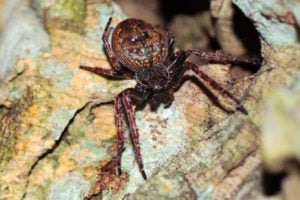 Also known as the evening spider as it’s most active at night, the walnut orb-weaver emerges after dark to weave a new web every night. This means, as most people are at home in the evening, it’s one of the most commonly-seen spiders in the UK.
Also known as the evening spider as it’s most active at night, the walnut orb-weaver emerges after dark to weave a new web every night. This means, as most people are at home in the evening, it’s one of the most commonly-seen spiders in the UK.
Identifying Walnut Orb-Weaver Spiders
Walnut orb-weavers are fairly small and can grow to around 16mm – about the size of a two pence piece. They have a large, round abdomen covered in black and brown markings.
How Venomous is the Walnut Orb-Weaver?
The walnut orb-weaver is one of the most venomous spiders in the UK. A bite from one of these will cause a burning pain and a tingly numbness around the bite. You should be able to recover within a day, though.
The European Garden Spider
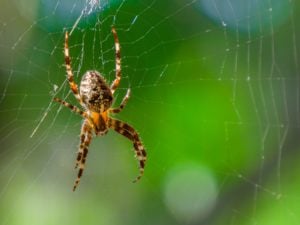 European garden spiders are extremely common in the UK from summer through to the beginning of winter.
European garden spiders are extremely common in the UK from summer through to the beginning of winter.
Identifying European Garden Spiders
Much like walnut orb-weavers, European garden spiders are small with round, fat abdomens. They have a distinctive blotchy pattern on their abdomens which looks like a crucifix, meaning they’re commonly referred to as cross spiders.
How Venomous are European Garden Spiders?
While they don’t have the most painful bite, European garden spider venom can cause swelling around the bite and a feeling of nausea that lasts for a couple of days.
The Wasp Spider
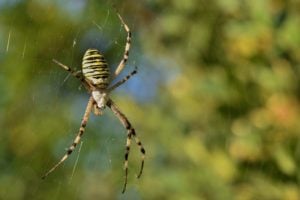 Relatively new to the UK and still quite rare, wasp spiders arrived in the country in the mid-2000s. Wasp spiders are slowly spreading across the south of England, but they haven’t been seen north of Hertfordshire at the time of writing.
Relatively new to the UK and still quite rare, wasp spiders arrived in the country in the mid-2000s. Wasp spiders are slowly spreading across the south of England, but they haven’t been seen north of Hertfordshire at the time of writing.
Identifying Wasp Spiders
Wasp spiders are instantly recognisable thanks to their bright yellow and black markings. They’re quite small, and you won’t see any larger than 15mm.
How Venomous are Wasp Spiders?
Wasp spider venom causes immediate pain which migrates towards your groin, but they don’t cause any lasting harm.
The Woodlouse Spider
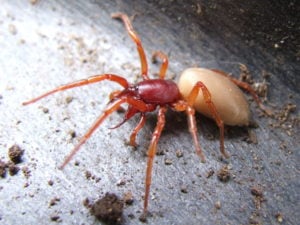 Named because they like to live in damp wood and prey on woodlice, woodlouse spiders are extremely common in all areas of the UK.
Named because they like to live in damp wood and prey on woodlice, woodlouse spiders are extremely common in all areas of the UK.
Identifying Woodlouse Spiders
Woodlouse spiders have quite an intimidating appearance – they’re a deep red colour and can grow up to 4cm in size. They like to hang around in all the places you’d expect to find woodlice, so you’re likely to find them in your shed or garage.
How Venomous are Woodlouse Spiders?
Woodlouse spider bites feel more like uncomfortable nips, and they don’t cause any lasting effects apart from a bit of itchiness and some mild pain. Their appearance might be alarming, but there isn’t much to worry about when it comes to woodlouse spiders!
The Tube Web Spider
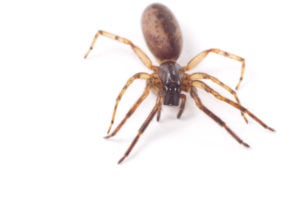 Another species of spider that’s extremely common, tube web spiders (also known as cellar spider) are one of the largest species of spider native to Europe. They’re found all over the UK in both urban and rural areas.
Another species of spider that’s extremely common, tube web spiders (also known as cellar spider) are one of the largest species of spider native to Europe. They’re found all over the UK in both urban and rural areas.
Identifying Tube Web Spiders
As the name suggests, tube web spiders like to build cylindrical webs. They’re pretty unremarkable to look at, with long, plain brown bodies.
How Venomous are Tube Web Spiders?
Tube web spiders are relatively aggressive by spider standards, but while their bite is intensely painful at first, there are no lasting effects and the pain will fade within a few hours.
The Cardinal Spider
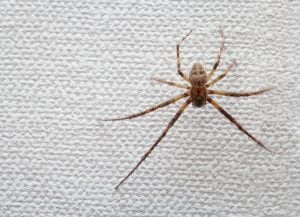 Cardinal spiders are the largest breed of spider in the UK, and they have a bad reputation. They take their name from Tudor times, as (clergyman and advisor to Henry VIII) Cardinal Wolsey was allegedly once scared by a particularly big one.
Cardinal spiders are the largest breed of spider in the UK, and they have a bad reputation. They take their name from Tudor times, as (clergyman and advisor to Henry VIII) Cardinal Wolsey was allegedly once scared by a particularly big one.
Identifying Cardinal Spiders
If you see a house spider that’s terrifyingly huge, chances are it’s a cardinal spider! They can grow to over 12cm in size and have mottled brown markings on their body and legs. They tend to be much more active at night time when you’re more likely to be at home, so they’re seen around the country quite often.
How Venomous are Cardinal Spiders?
Despite their scary appearance, cardinal spiders aren’t very venomous at all. Their bite is mostly painless and has no lasting effects.
The Noble False Widow Spider
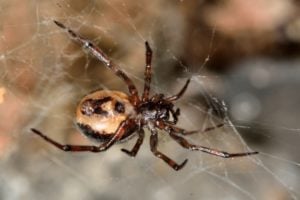 Well-known as the UK’s most venomous spider, noble false widows are growing increasingly common throughout the UK. Named because of their resemblance to the very dangerous (but not native to the UK) black widow, false widows hit the headlines in autumn every year.
Well-known as the UK’s most venomous spider, noble false widows are growing increasingly common throughout the UK. Named because of their resemblance to the very dangerous (but not native to the UK) black widow, false widows hit the headlines in autumn every year.
Identifying Noble False Widow Spiders
False widows are small, with a slightly rounded body. Part of their fearsome reputation comes from the greyish markings on their abdomen, which often resembles a skull.
How Venomous are False Widow Spiders?
False widows are by far the most venomous spiders in the UK, but they still don’t have enough venom in their bites to kill a human. However, their bites are extremely painful and can result in blistering and open sores which are prone to infection. These infections can lead to complications that need further medical attention. Other symptoms of false widow bites can include dizziness, nausea, fever, and heart palpitations. For more information on what to do if you’re bitten by a false widow, read our blog on false widow spiders.
Preventing Spiders from Entering Your Home
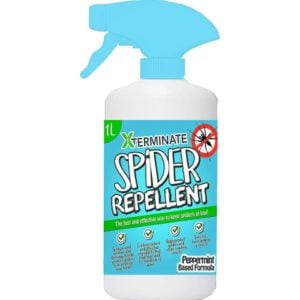 While none of the spiders native to the UK has a deadly bite, being bitten by one is still an unpleasant experience. Spiders moving indoors isn’t just a problem for arachnophobes, though; they can be a real hygiene risk, tracking bacteria and leaving droppings all over your home. Spiders are also known to set off burglar alarms by crawling directly over motion sensors. You can keep spiders out of your home with some spider repellent. Spider repellent comes in two varieties; fragranced and mechanical. Fragranced spider repellent gives off a peppermint odour that spiders dislike, meaning they won’t go near it. Mechanical spider repellent creates an invisible barrier that causes the surface it’s sprayed on to become sticky to spiders. The effect is like making them walk in treacle, and the spider will eventually give up and leave the area. Spraying one – or ideally, both – of these spider repellents around your home is the most effective way to keep spiders out. Spray them around any entrances to your home, such as door and window frames, around a fireplace, and across skirting boards. This will discourage spiders from entering your home in the first place.
While none of the spiders native to the UK has a deadly bite, being bitten by one is still an unpleasant experience. Spiders moving indoors isn’t just a problem for arachnophobes, though; they can be a real hygiene risk, tracking bacteria and leaving droppings all over your home. Spiders are also known to set off burglar alarms by crawling directly over motion sensors. You can keep spiders out of your home with some spider repellent. Spider repellent comes in two varieties; fragranced and mechanical. Fragranced spider repellent gives off a peppermint odour that spiders dislike, meaning they won’t go near it. Mechanical spider repellent creates an invisible barrier that causes the surface it’s sprayed on to become sticky to spiders. The effect is like making them walk in treacle, and the spider will eventually give up and leave the area. Spraying one – or ideally, both – of these spider repellents around your home is the most effective way to keep spiders out. Spray them around any entrances to your home, such as door and window frames, around a fireplace, and across skirting boards. This will discourage spiders from entering your home in the first place.
Comments
Leave a reply
Your e-mail address will not be published. All fields are required


